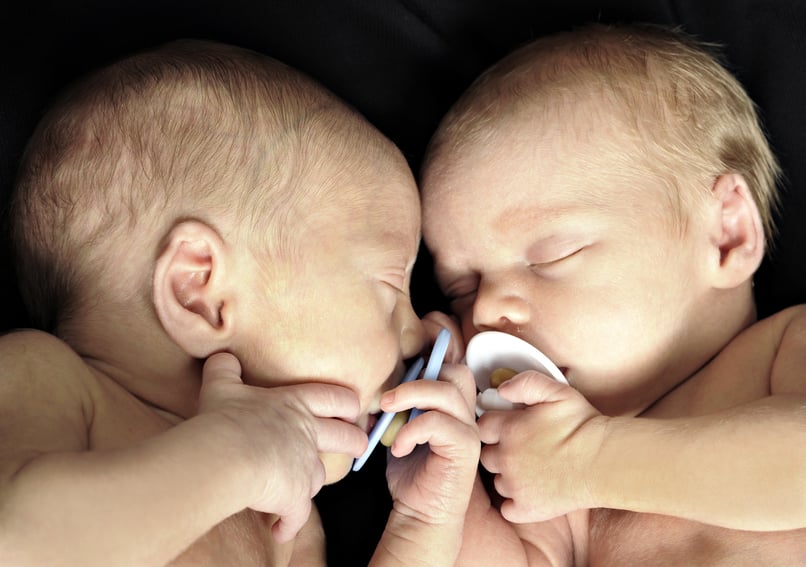They are similar in almost any aspect of their appearance. This could lead you to ask, “Do twins have the same fingerprints?”
Each of us have features that distinguish us from our siblings and even from our parents. Although we carry the same genetic material from our parents, our own DNAs are unique as we developed differently during our mother’s pregnancies.
These unique characteristics, of course, include our fingerprints. They are perhaps our most distinctive feature that sets us apart from our family, friends and relatives.
Twins, on the other hand, are special cases. Whether they are fraternal or identical, their genetic code share significant amounts of similarities.
Now, the question we will tackle here is: Do they share the same fingerprint patterns?
First, let us tackle how twins develop. After establishing the facts of twins’ development during their mothers’ pregnancies, we will look at scientific evidence and facts that can determine whether or not twins share similar fingerprints.
How Twins Develop
As mentioned earlier, there are actually two types of twins: the fraternal and the identical.
The identical twins are the ones that people often mistake for one another. They share nearly all physical attributes, from the hair, to the voice, the height and everything else.
According to the National Geographic, identical twins are the result of a single fertilized cell from the mother (referred to as ovum) that split into two when embryonic development progressed. Researchers say that identical twins have the same genetic code as they came from one single ovum.
An article published by the University of Utah indicated that identical twins owe their nearly identical attributes to that single genetic code they inherited from that one egg that split into two after fertilization.
According to the article, around 90% of the twins that they studied share the same height, for instance.
On the other hand, fraternal twins are those that developed from two eggs fertilized by two sperm cells. Thus, while they may look alike in some aspects, fraternal twins actually have only 50% of their DNA shared – their genetic codes, after all, come from the same mother and father.
According to Sciencing.com, this is due to the twins not having similar chromosomes. Of course, this is a result of being born out of two individual eggs fertilized by two individual sperms.
Here is an analogy that will simplify identical and fraternal twin development. Think of a single egg as a set of specific genetic instructions, and a single sperm cell also as a storage of specific genetic code.
In identical twins, that genetic code simply splits into two when the egg divides itself. Before that happens, the genetic code from the sperm has also written itself into the code in the egg during fertilization.
When the egg splits, none of the combined genetic code is not altered. It is simply divided into two similar sets.
In the case of fraternal twins, they are the result of four genetic codes (two eggs, two sperms) that merged into two combinations. Thus, the genetic code of each fraternal twin is significantly different from the other.
With that out of the way, the discussion all boils down to the same conclusion: whether they are fraternal or identical, twins still share several aspects of their genetic code and, in the case of fraternal twins, some aspects of their appearance.
Do those aspects include fingerprints? Let’s take a look at what science and experts have to say on the matter.
Evidence and Science Say No, Twins Fingerprints Are Not Similar
It’s actually an interesting question. If twins do share the same fingerprint, wouldn’t that make life difficult for the two of them?
For example, fingerprints play a very important role in law enforcement. In a crime scene, one of the first pieces of evidence that are sought by investigators are fingerprints that could have been left behind by the perpetrator.
Let’s say that one of a pair of twins committed the crime. If they have the same fingerprint, wouldn’t it be difficult for both the twins and law enforcement agencies to prosecute the case?
Well, according to the experts, no, twins don’t share the same fingerprint profile.
Gary W. Jones, a former specialist for the FBI, told the New York Times that, while genetics do play a part in the formation of the patterns in a finger print, other factors influence their formation.
One of these factors, the article said, is the rate of growth experienced by the baby’s skeletal system. As each of the individual twin moves around the womb during gestation period, they also interact differently with the amniotic sac.
The amniotic sac is the bag of fluid that protects the fetus or, in this case, the fetuses while they grow and develop. The sac acts as a cushion that protects babies from blunt impact, as well as an ‘incubator’ to influence the baby’s development.
Now, according to Jones, each twin experiences different pressures in each of their space within the amniotic sac. This also leads to different fingerprint patterns for each baby in the pair, the forensic expert added.
The ex-FBI specialist also noted to the New York Times that, in the century in which fingerprint science has been developed, there has never been a result in which two people shared the same fingerprint data.
Thus, fingerprints play a huge role in forensics, because it is the only attribute in a person’s physical identity that can be altered.
The only ways through they can be altered is for records to be tampered, which is a federal crime, and in the unfortunate event that the person experiences skin disorders or a severe accident.
So, to close the subject, we go back to the question we asked first: “Do twins have the same fingerprints?”
Well, the evidence and the knowledge of experts point to the contrary. This means that, no, despite their genetic similarities, there’s only one aspect in which twins are unique from one another – their fingerprints.







 Store
Store